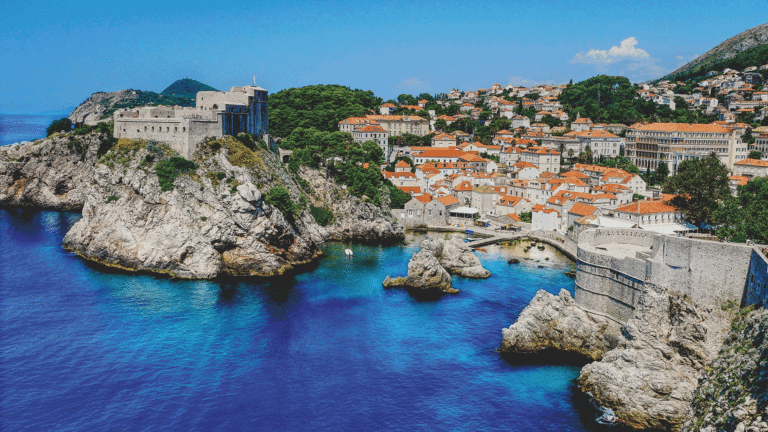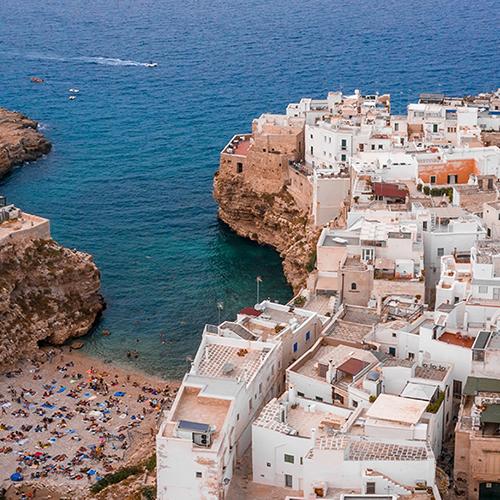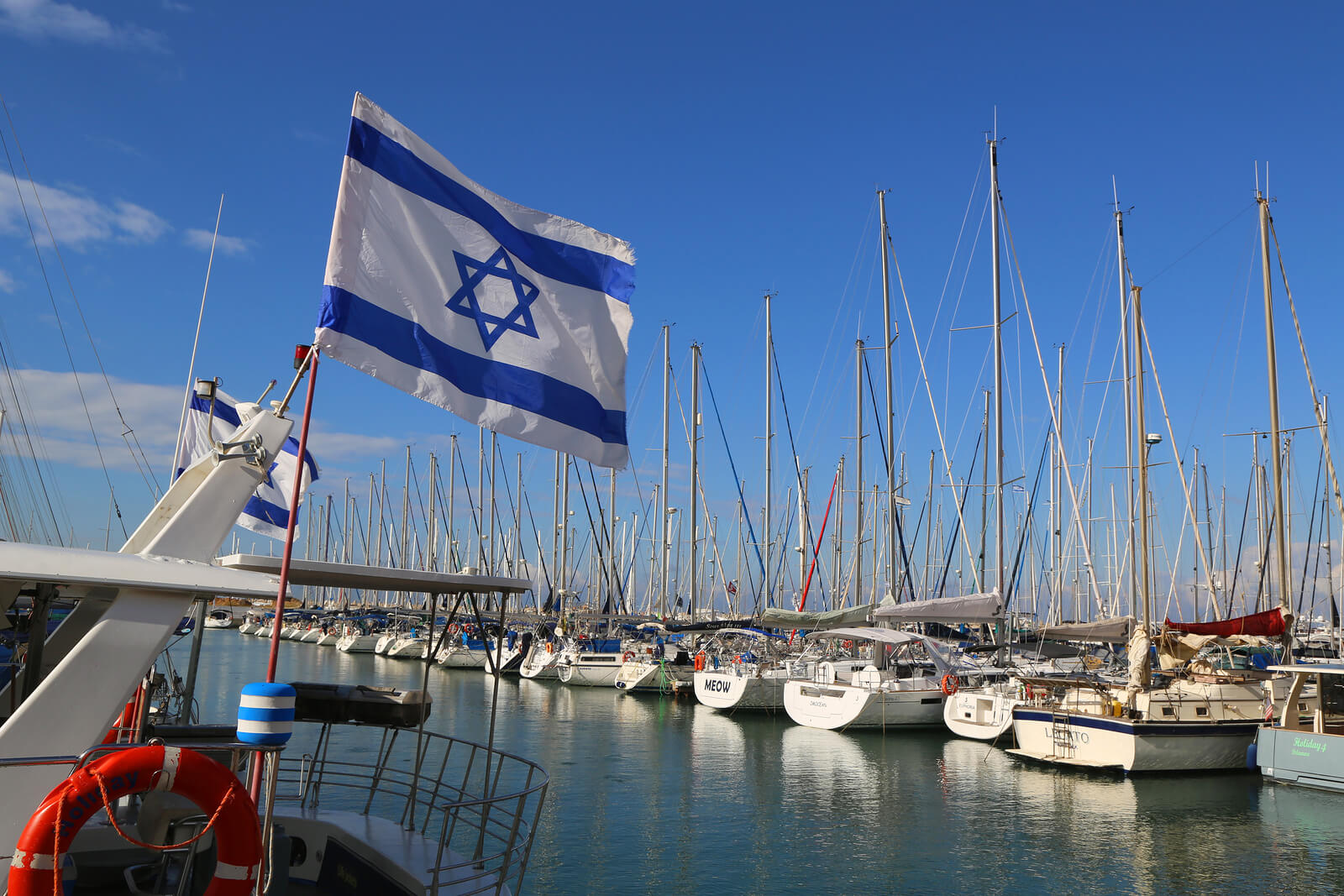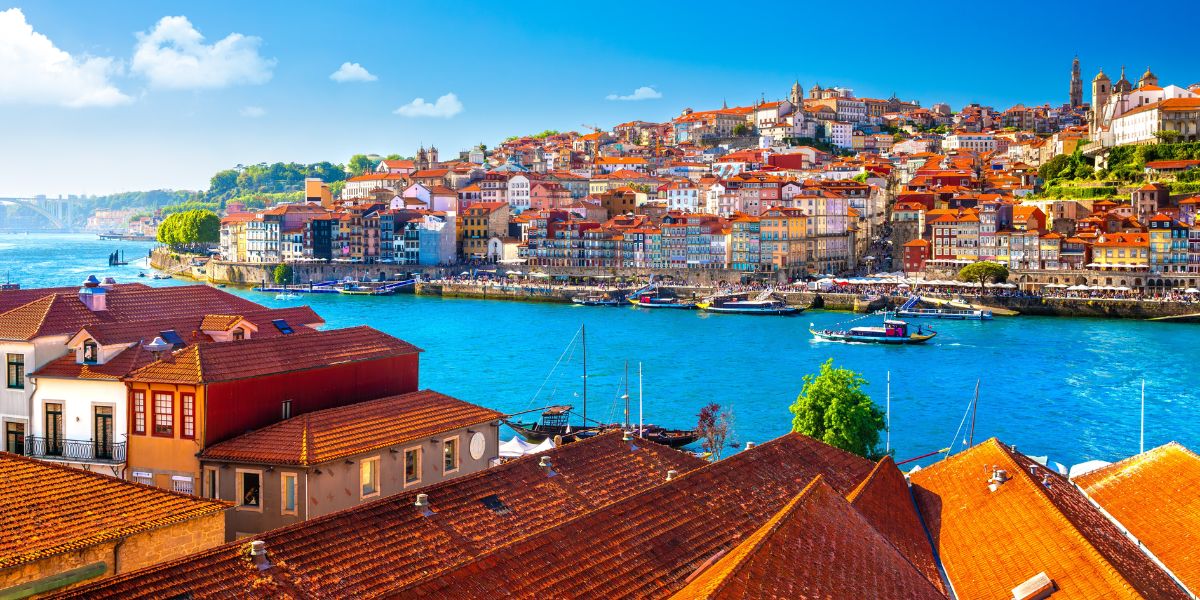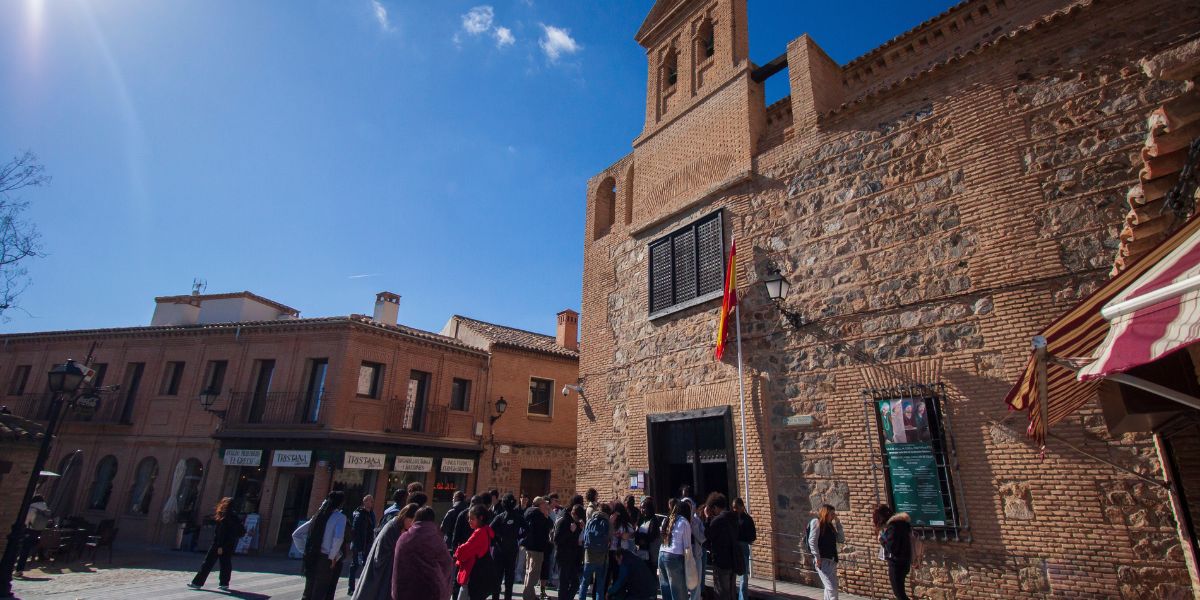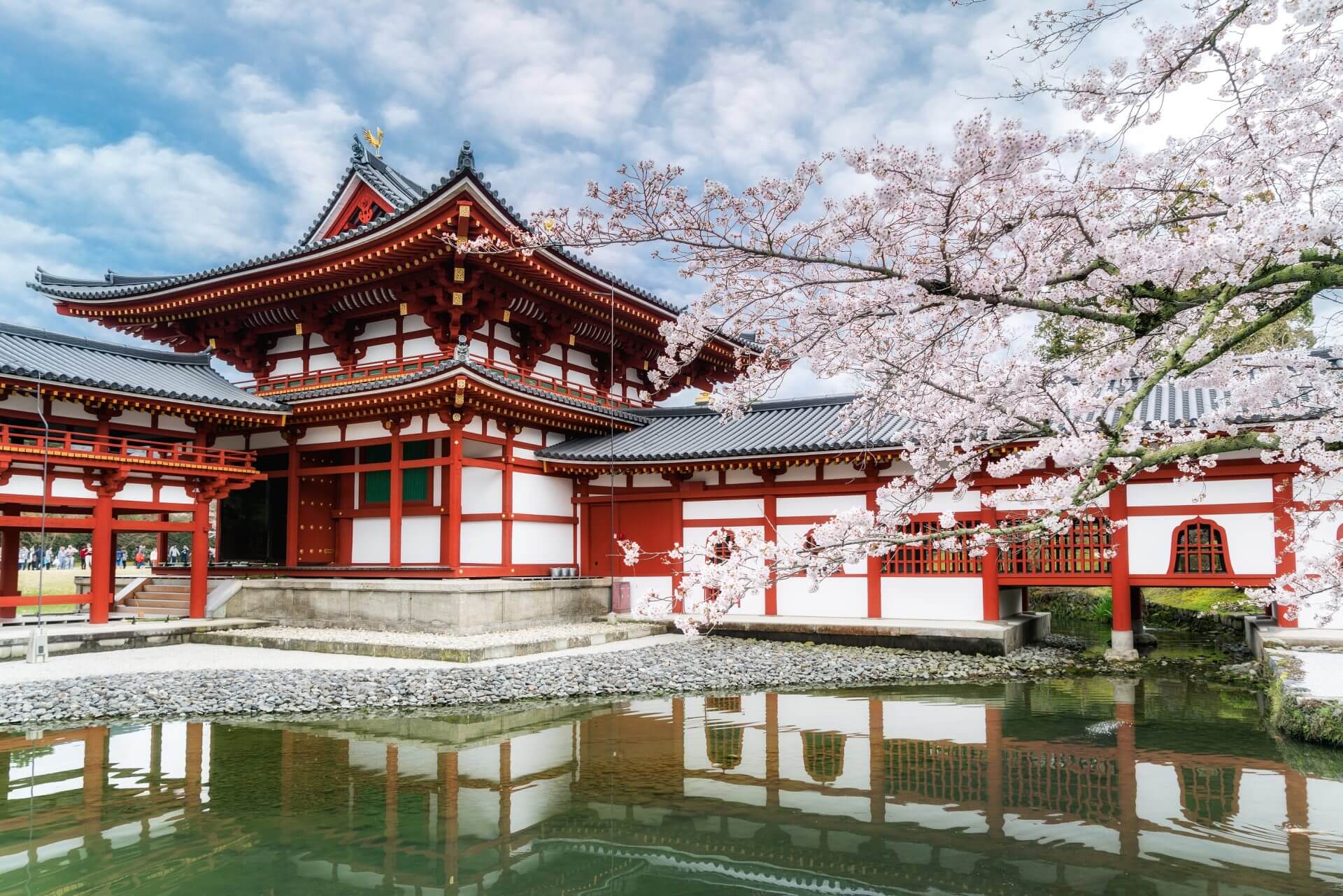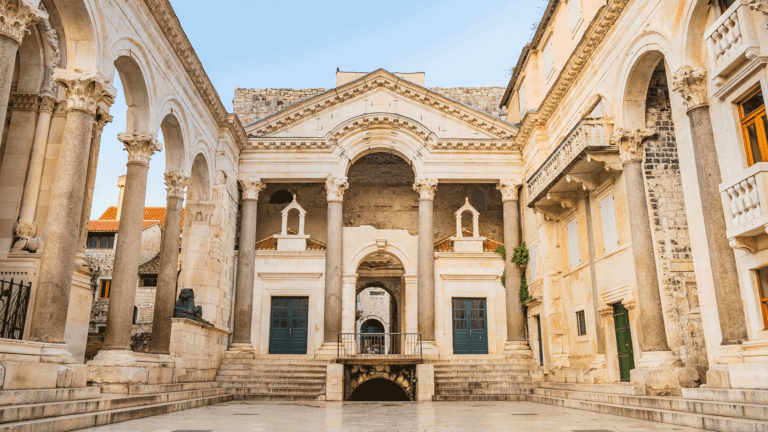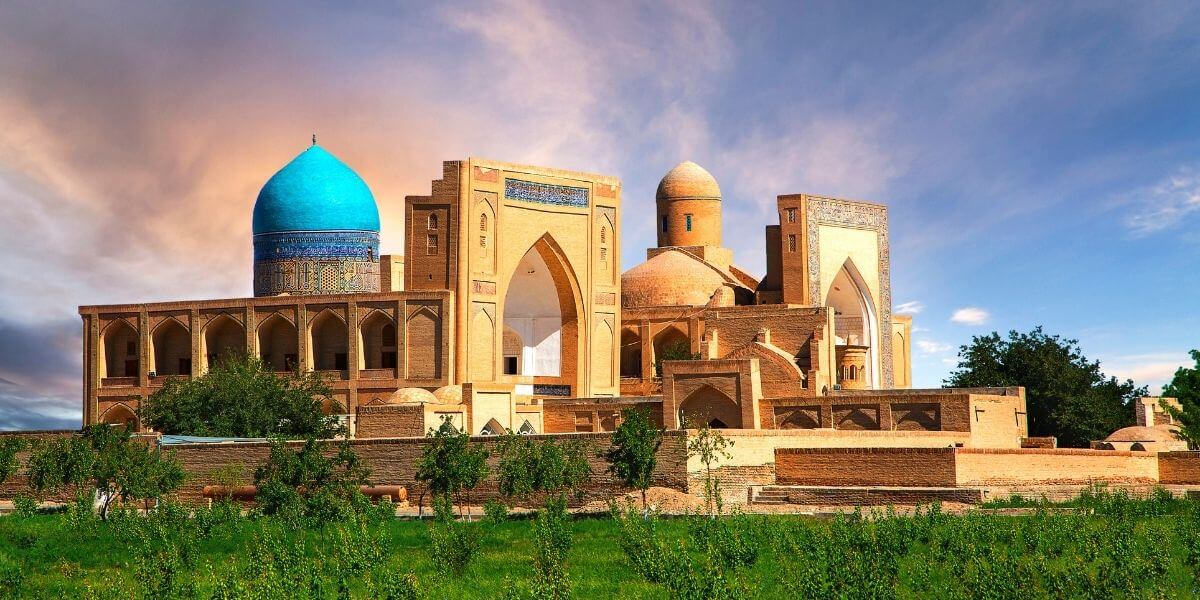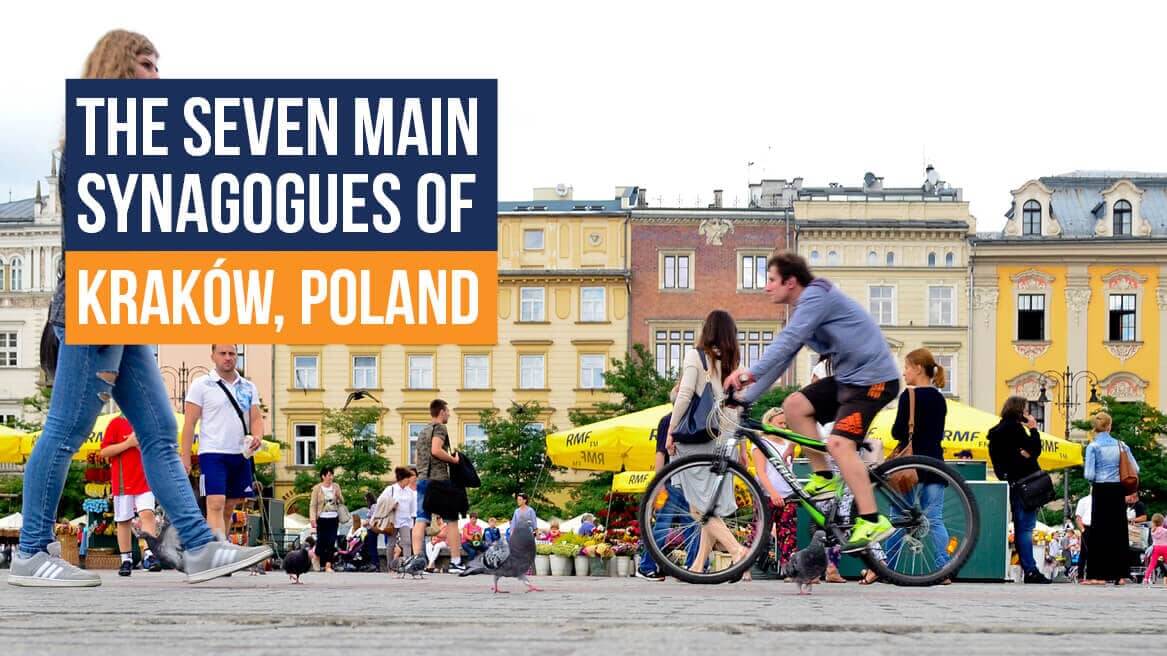
Poland is known for its Jewish history, and Krakow’s magnificent old synagogues are a living testimonial. Before World War II, around 64,000 Jews lived in Krakow, this is why the city is home to so many beautiful Jewish synagogues.
Much of the Jewish community in Krakow lived in a place called Kazimierz, south of the medieval old town. Kazimierz was, at first, a place where many Jews went to escape persecution from other places in Eastern Europe. In the area, Jews had freedom of worship for a long time.
Because of that, the synagogues in Krakow are old and fascinating, and a rare glimpse into Polish Jewish roots.
Their fortunes changed throughout history, however, but until World War II what remained consistent was the importance of Kazimierz as a center of Jewish life and community, with the Polish synagogues often being the center of that life.
Today, Kazimierz has cute cafes, jazz venues, and beer basements, as well as some restaurants cooking Jewish food, but it’s also home to some of the most interesting synagogues to visit in Poland.
Poland was a Jewish center for centuries–where great scholars defined what it meant to be Jewish, new religious movements changed the landscape of the Jewish people, and great tragedies, like the Holocaust and pogroms, came to be defining parts of modern Jewish identity.
The famous synagogues in Krakow are structural testaments to that history, and some of the most important places to visit on Jewish heritage tours to Poland.
What is the biggest synagogue in Krakow?
The Isaac Synagogue is the largest synagogue in Krakow. It’s also one of the most beautiful. It currently houses exhibitions and projects about the history of the Kazimierz district.
How many synagogues are there in Krakow?
There are seven main Polish synagogues in the Polish city of Krakow. Most of the Krakow synagogues are in the district of Kazimierz, which is the second-largest Jewish complex in Europe next to the area in Prague.
Can you visit a synagogue in Krakow?
You can visit many synagogues in Krakow. Several of them have been converted into museums, and others are still active.
If you find yourself in Krakow or planning a Jewish roots trip with your family you have to visit at least one of these magnificent testimonials for the historical Jewish life once inhibited in Krakow. We gathered on this post the synagogues you can visit on your next trip to Krakow.
Remuh Synagogue
We begin our tour with something small and unassuming, but still important as a center for Jewish life throughout history.
The Remuh Synagogue is the smallest of the seven most interesting synagogues in Krakow, but that does not mean it’s any lesser than the others.
The Synagogue was originally built in the 1600s and is one of the oldest synagogues in Krakow. It was built as a gift for the son of the wealthy merchant Isserl ben Josef.
His son was the rabbi of Krakow and the rector of the local Yeshiva, as well as a prolific author of works on philosophy, religion, and mysticism. His work called mappa (tablecloth) is still in use by many orthodox Jews around the world today.
The most visually striking part of the synagogue is the collection of stone pillars in front.
Remuh is an acronym of the first letters of the Hebrew transcript of “Rabbi Moses Isserles”. The synagogue is in memory of the Rabbi and scholar.
It’s a current religious center of Krakow’s Jewish community, where one can see the revival of Polish Jewry in modern times.
Next door to the synagogue is the Remuh cemetery, with burials dating back to 1551. It’s one of the oldest Jewish cemeteries in Poland and is the burial site of many famous Talmudic scholars, as well as Yossele the Holy Miser, a protagonist in a famous Jewish folktale.
During the occupation, Germans used the cemetery as a garbage dump, but today it has been restored. Many of the graves have interesting motifs on them, including crowns, vines, and a jug and bowl for Levites.
Moses Isserles’ legacy has continued for a long time, and many Jewish people come to the cemetery to visit the tomb of Moses Isserles and leave notes with requests at his tomb. His grave, miraculously, is the only one that wasn’t destroyed during the war. There’s even a legend that a Nazi soldier tried desecrating the grave and was struck by lightning.
At the synagogue, you can also see a Tzedakah box asking for generous donations at the entrance and a Torah Ark from the Renaissance period.
The synagogue is one of two active synagogues in the city, so it is a good place to start if you want to meet some of the current community. The courtyard walls of the shul are adorned with inscriptions in memory of the Jews of Krakow that were murdered in the Holocaust.
The synagogue is closed on Saturdays and Jewish holidays and tickets are 10/5 PLN. It’s located on ul. Szeroka 40.
The synagogue is open Monday-Thursday 10:00-16:00 and Sundays from 10:00-16:00
Old Synagogue
The Old Synagogue was built in the 15th century. It’s the oldest surviving example of Jewish religious architecture in Poland and the oldest free-standing synagogue in Poland A true testament to Poland’s historic cities. The original congregation was actually composed of Czech Jews.
Although it is the oldest synagogue in Krakow, it has gone through some remodeling. In the 16th century, the synagogue was rebuilt by Polish Italian architect Mateo Gucci, and Renaissance elements as well as military architecture was added to the building. The synagogue today is a fortress synagogue that can shelter and protect people during a siege.
During World War II, the Nazis destroyed the synagogue and used it as a storehouse, but when the war ended, the synagogue became part of the Historical Museum of Krakow. It now depicts the daily life of Jews in the Jewish quarter before WWII.
The synagogue is actually a part of the Historical Museum of Krakow and shows how the community goes through birth, prayer, diet, death, and divorce. There is a women’s prayer room that hosts temporary exhibits.
The synagogue is open at various times throughout the week, so make sure to get the most updated info from their website. It’s located at 24, Szeroka Street.
Izaak Synagogue
The Izaak synagogue was built in the 17th century by banker Ayzik Jakubowicz. It’s the largest synagogue in the city and possibly the most beautiful.
Its founding legend was first told by Polish Rebbe, Simcha Bunim of Peshischa. He said that Ayzik Jakubowics, a pious but poor Jew, dreamed of treasure beneath the old bridge in Prague.
He went to go find it, but the bridge was guarded by soldiers. When he told an officer his dream, he offered them half of the amount. The officer denied him and said only fools could possibly believe in dreams. The officer then said that he himself had recently dreamt that in Kazimierz there was a treasure in the oven of the home of Ayzik Jakubowics. Ayzik went home, took the oven apart, and found the treasure. It is said that that is how he became rich enough to build the synagogue.
Outside, the building is unassuming, but it has a well-preserved Baroque-style interior with decorative arabesques and arches and 17th-century Hebrew writings.
The synagogue is currently an exhibition space for projects and documentaries about the history of Kazimierz.
The synagogue is open every day of the week except Saturday from 9:00-19:00. It costs 7 PLN for entrance, 10 PLN to take photographs, and is located at 18 Kupa.
Wolf Popper Synagogue
Wolf Popper Synagogue was founded by the successful merchant Wolf Popper in the 17th century and was active until 1965.
Wolf Popper was nicknamed “The Stork” because he stood on one leg when lost in deep thoughts.
The inside of the synagogue was wrecked by the Nazis during World War II. It was converted into a cultural century during the PRL era and was only recently returned to the Jewish community. Currently, Austeria, a Judaica publishing house, and a bookshop occupy it.
If you visit, you can see a colorful mural with Jewish themes in the courtyard, as well as a small gallery space with changing exhibits. There are also sometimes educational activities, an art studio, and Jewish dance classes.
The synagogue is open 10:00-19:00 on weekdays and is located at Szeroka 16.
Kupa Synagogue
Kupa Synagogue was also established in the 17th century. It was the very last synagogue built while Kazimierz was an independent city.
Originally it was Baroque-style, but the Nazis destroyed most of the furniture and ornaments. Today, the interior has been restored. Colorful paintings representing cities in Israel cover the walls.
The synagogue today is mostly used as a space for concerts, exhibits, and occasional conferences. It should be open every day except Saturday from 9:00-18:00, but it is often closed, so we recommend calling to make sure it’s open. Admission is zl 3. It’s located at Warszauera, 8.
High Synagogue
The high synagogue, also known as the Tall Synagogue or Wysoka Synagogue, was built in the 16th century, the third built in Kazimierz and one of the first in Poland.
During World War II, the Nazis destroyed much of the inside of the temple but kept a few of the original murals.
What makes the synagogue unique is that its prayer rooms are all on the second floor. Today, the High Synagogue does not have an active community. However, it does host exhibits about the Jewish people in Poland.
There’s a permanent photographic exhibit on the families of Kazimierz in the building and you can visit the Jewish bookshop chain, Austria, on the first floor, to pick up a piece of literature or Jewish thought books.
The synagogue is open every day from 9:00-17:00. Admission is US$2 and it’s located at 38, Jozefa.
Tempel Synagogue
The reform Tempel Synagogue was built in the 19th century by Ignacy Herok and is famous for its Neo-Renaissance style combined with Moorish Decor. It is painted in colorful patterns and gold leaf.
During World War II it was wrecked by the Nazis, but after the war donations from around the world made it possible to have a huge renovation on the synagogue.
Although the synagogue is not used as a place of worship, it hosts meetings and concerts.
The synagogue is open every day except Saturday and Sunday from 10:00-18:00. It is located at Miodowa, 24, and costs US$1.10 for adults.
To sum things up Polish synagogues, especially in Krakow are some of the best places to learn about your Jewish roots. While Krakow is one of the best places to see many Polish synagogues in one place, it is also a great place to explore and get to know the modern Polish culture, enjoy good food, and create unforgettable experiences for you and your family.
If you are considering a visit to this unique place and wish to enjoy, explore, learn, and connect to Krakow check out our organized tours and costume trip options on our Poland experience page.
